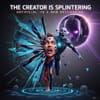AI is turning the creator world into a split‑screen drama. On one side you’ve got creators sprinting ahead, letting AI churn out videos, edit clips and pump out posts at lightning speed—think Meta’s Vibes tab and OpenAI’s Sora app, which let anyone crank out AI‑generated video on demand. On the other side are creators who double‑down on the human edge: raw voice, vulnerability and the messiness that only a real person can bring.
That tension isn’t new, but the stakes feel higher now. Some see AI as a tool that can make them faster, smarter and more efficient, while others worry it’ll flood feeds with low‑quality “AI slop” and erode what makes their work authentic. The conversation is getting louder: creators are picking sides based on whether they want to build new, surreal worlds or stay grounded in their own lived experience.
The real divide isn’t about tech access—it’s about intent. Creators who use AI to deepen their voice and add a fresh layer to their craft tend to thrive, whereas those chasing pure efficiency risk flattening meaning. In short, AI isn’t splitting the creator class; it’s exposing the existing fault lines between makers who chase possibility and those who guard presence.


